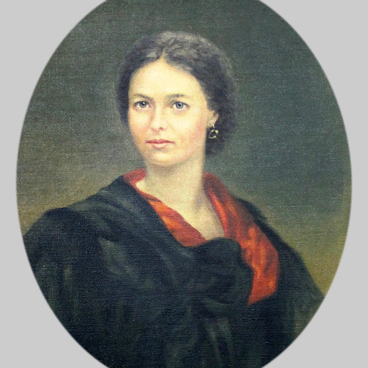A fireplace clock is both a device for determining the time and a work of decorative and applied art. In past centuries, they testified to the high status and refined taste of their owner. The first fireplace clock appeared in France in the middle of the 18th century, and here it reached its peak of popularity. Court clockmakers worked under the patronage of the king himself. The 19th century became the ‘golden age’ of fireplace clocks. It was the time of the birth of a new direction in art. The interior was carefully thought out, and clock decor became an integral part of the grand living rooms. Clocks were made in different styles, often decorated with gilded and bronze sculptural compositions. In the 19th - 20th centuries, fireplace clocks were very popular in Russia, where there were also masters for their manufacture.
The fireplace clock with a candlestick, which was made in Paris in the first half of the 19th century, is part of the museum collection of the Yalutorovsk Museum Complex.
The clock is placed in a metal one-sided, hollow case, painted bronze. It stands on four curved legs. The front side is decorated with a relief floral ornament. In the center, under glass in a round frame, there is a white dial with Roman numerals and two black hands. The clock mechanism is faulty these days.
The clock is crowned with a candlestick and sculptural figures of a young man and a girl sitting on both sides of the candlestick. Next to the young man you can see a sheaf of wheat with a sickle and a pipe.
The history of this watch is connected with an old friend of the museum, the Moscow artist Evgeny Uspensky. He was the last owner of this antique clock. In 1988, it was acquired by Nikolai Zubarev, director of the Yalutorovsk Museum of Local Lore in Memory of the Decembrists, during a scientific trip to Moscow. Uspensky’s brushes belong to several works that are currently kept and exhibited in the Yalutorovsk Museum Complex. Among them, you can see the portrait of Matvey Ivanovich Muravyov-Apostol, a copy from the watercolors of the 1820s. The portrait is on display at the memorial house of M.I. Muravyov-Apostol.
The fireplace clock with a candlestick, which was made in Paris in the first half of the 19th century, is part of the museum collection of the Yalutorovsk Museum Complex.
The clock is placed in a metal one-sided, hollow case, painted bronze. It stands on four curved legs. The front side is decorated with a relief floral ornament. In the center, under glass in a round frame, there is a white dial with Roman numerals and two black hands. The clock mechanism is faulty these days.
The clock is crowned with a candlestick and sculptural figures of a young man and a girl sitting on both sides of the candlestick. Next to the young man you can see a sheaf of wheat with a sickle and a pipe.
The history of this watch is connected with an old friend of the museum, the Moscow artist Evgeny Uspensky. He was the last owner of this antique clock. In 1988, it was acquired by Nikolai Zubarev, director of the Yalutorovsk Museum of Local Lore in Memory of the Decembrists, during a scientific trip to Moscow. Uspensky’s brushes belong to several works that are currently kept and exhibited in the Yalutorovsk Museum Complex. Among them, you can see the portrait of Matvey Ivanovich Muravyov-Apostol, a copy from the watercolors of the 1820s. The portrait is on display at the memorial house of M.I. Muravyov-Apostol.



